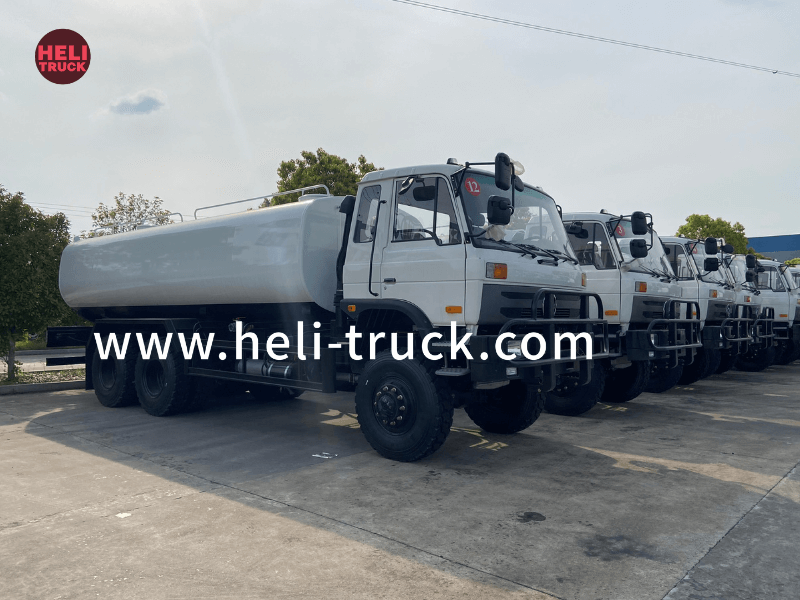Introduction
Vacuum trucks play a crucial role in waste management by efficiently collecting and transporting various types of waste materials. From industrial byproducts to hazardous substances, these specialized vehicles are equipped to handle a wide range of waste disposal tasks. As part of their operational procedures, vacuum truck operators must maintain accurate records of waste collection and disposal activities. Proper record-keeping not only ensures regulatory compliance but also helps in tracking waste volumes, identifying trends, and optimizing operational efficiency.
In this article, we will delve into the importance of waste disposal record-keeping for vacuum trucks, explore the key components of an effective record-keeping system, and discuss strategies for streamlining the process to enhance overall efficiency.
Importance of Waste Disposal Record Keeping
Accurate record-keeping is essential for vacuum truck operators to demonstrate compliance with environmental regulations and industry standards. By maintaining detailed records of waste disposal activities, operators can provide evidence of proper handling, transportation, and disposal of waste materials. This documentation is critical during regulatory inspections, audits, and in the event of any environmental incidents or disputes.
Furthermore, waste disposal record keeping enables operators to track the volume and types of waste collected, identify patterns or trends in waste generation, and monitor the performance of waste management programs. This data-driven approach can help in making informed decisions regarding resource allocation, equipment maintenance, and operational improvements.
Key Components of an Effective Record-Keeping System
1. Waste Manifests: A waste manifest is a legal document that provides a comprehensive record of the waste materials collected, transported, and disposed of by a vacuum truck. It includes details such as the waste generator's information, the type and quantity of waste, the collection and disposal locations, and signatures of all parties involved in the waste management process. Maintaining accurate and up-to-date waste manifests is crucial for regulatory compliance and accountability.
2. Tracking Systems: Implementing a tracking system, such as a digital database or software, can streamline the record-keeping process for vacuum truck operators. These systems allow for real-time data entry, storage, and retrieval, making it easier to manage large volumes of waste disposal records efficiently. Additionally, tracking systems can generate reports, analyze data trends, and facilitate communication between different stakeholders in the waste management chain.
3. Documentation of Procedures: Documenting standard operating procedures (SOPs) for waste disposal activities is essential for ensuring consistency and compliance in operations. SOPs should outline the steps involved in waste collection, transportation, and disposal, along with safety protocols, regulatory requirements, and record-keeping guidelines. By documenting procedures, operators can train staff effectively, mitigate risks, and maintain quality control in waste management operations.
4. Training and Compliance: Proper training of personnel involved in waste disposal operations is crucial for maintaining accurate records and complying with regulations. Training programs should cover topics such as waste classification, handling procedures, safety protocols, and record-keeping practices. Regular compliance audits and inspections can help identify any gaps or deficiencies in record-keeping processes and ensure adherence to regulatory requirements.
Streamlining Waste Disposal Record Keeping
1. Utilize Technology: Leveraging technology can significantly streamline waste disposal record-keeping processes for vacuum truck operators. Implementing Municipal vacuum trucks for sale , such as mobile apps, cloud-based software, or electronic data capture systems, can automate data entry, improve data accuracy, and enhance data accessibility. These technological solutions can also facilitate real-time tracking of waste disposal activities, generate automated reports, and integrate with other systems for seamless record management.

2. Standardize Data Entry: Establishing standardized data entry protocols can help maintain consistency and accuracy in waste disposal records. Define clear guidelines for documenting key information such as waste types, quantities, collection locations, disposal methods, and signatures. Providing training to staff on proper data entry procedures and conducting regular quality checks can ensure that data is recorded correctly and uniformly across all waste disposal activities.
3. Implement Checklists and Forms: Using checklists and standardized forms can streamline the record-keeping process by guiding operators through the required steps and information for each waste disposal activity. Pre-printed forms for waste manifests, disposal logs, or incident reports can help capture essential data efficiently and reduce the risk of missing or incomplete information. Customizing forms to include specific fields for key data points can facilitate data collection and organization.
4. Centralize Record Storage: Creating a centralized repository for storing waste disposal records can simplify record management and ensure data security and accessibility. Whether using a physical filing system or a digital document management platform, having a designated location for all records enables quick retrieval, easy updating, and secure storage of important information. Implementing a file naming convention, folder structure, and access controls can further enhance the organization and efficiency of record storage.
5. Conduct Regular Audits and Reviews: Periodic audits and reviews of waste disposal records are essential for verifying data accuracy, identifying discrepancies or errors, and ensuring compliance with regulatory requirements. By conducting internal audits or engaging third-party auditors, operators can validate the integrity of their record-keeping systems, address any issues promptly, and continuously improve record-keeping practices. Feedback from audits can also inform process enhancements and training needs for staff.
Conclusion
Effective waste disposal record keeping is a critical aspect of vacuum truck operations that ensures regulatory compliance, operational efficiency, and environmental stewardship. By maintaining accurate records of waste collection and disposal activities, operators can demonstrate accountability, track waste volumes, and optimize waste management practices. Implementing key components of an effective record-keeping system, such as waste manifests, tracking systems, SOPs, and training programs, can help streamline the record-keeping process and enhance overall efficiency.
By leveraging technology, standardizing data entry, utilizing checklists and forms, centralizing record storage, and conducting regular audits, vacuum truck operators can establish robust record-keeping practices that support their waste management operations. Streamlining waste disposal record keeping not only improves compliance and accountability but also enables operators to make informed decisions, drive operational improvements, and contribute to sustainable waste management practices.
